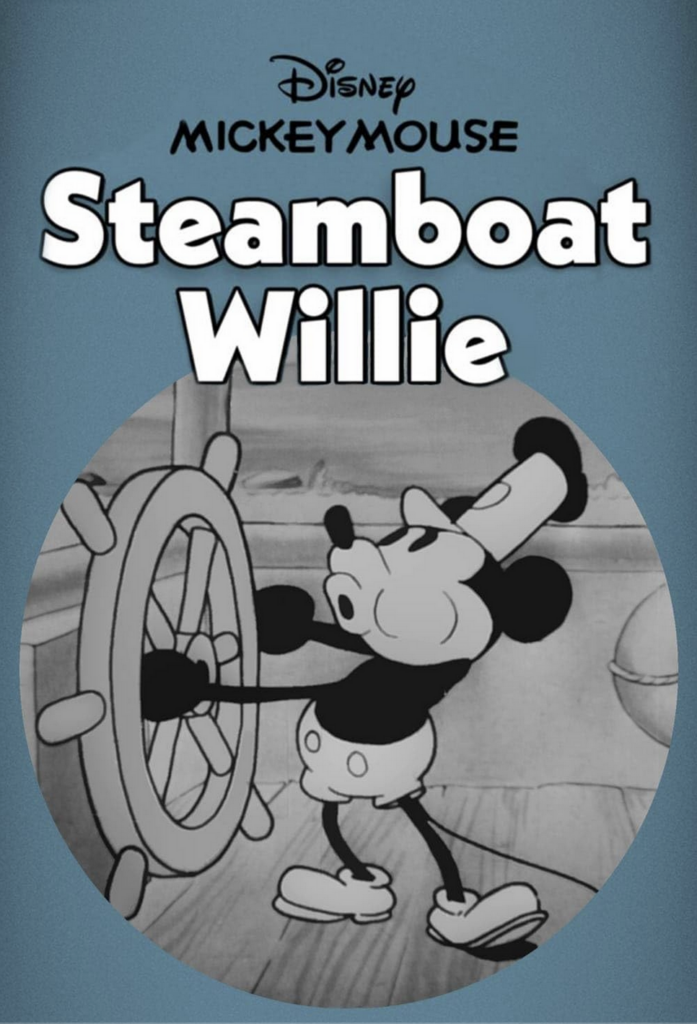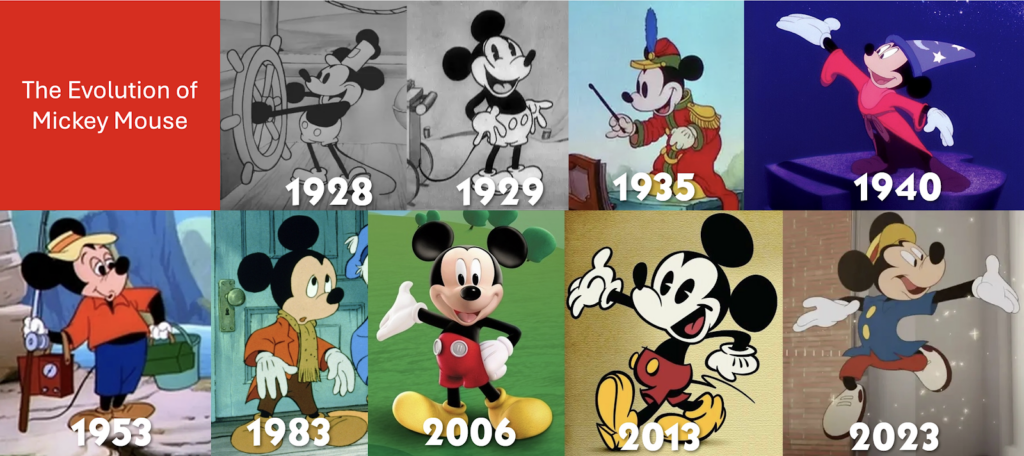
On November 18, 1928, Disney introduced Mickey Mouse to the world through the release of Steamboat Willie, a short animated film. On January 1, 2024, as allowed by U.S. Copyright Law, the movie entered the public domain. This blog post considers the legal consequences of this fact, and what users should be aware of when working with the Mickey Mouse character.
Copyright is enshrined in Article I Section 8 of the United States Constitution, allowing Congress to grant authors, for limited times, the exclusive right to their respective writings. The time limitation is an essential aspect in achieving copyright’s utilitarian purpose – to promote the progress of science and useful arts – as it allows for a larger pool of materials to become available for artists to build upon when creating their works.
In complying with that mandate, Congress passed in 1790 the US Copyright Act, which initially allowed for a copyright term of up to 28 years, a term which would be extensively modified over the course of the 19th and 20th centuries. By the time Steamboat Willie was released, a 1909 provision granted works made for hire a maximum of 56 years of protection, which would cause the movie to enter the public domain in 1985. Before that could happen, however, a 1976 amendment granted corporations 75 years of copyright protection, deferring the public domain entry to 2004. Lastly, in 1998, the Sonny Bono Copyright Term Extension Act added another 20 years on top of the 1976 provision, which leads us to the current January 2024 date. Major media corporations, like Walt Disney, were heavily involved in the lobbying efforts.
The fact that Steamboat Willie is in the public domain means that anyone is free to copy, distribute and publicly display the movie, and even build upon it to create derivative works, without having to seek Disney’s permission. But what about Mickey Mouse? As the main character of that movie, Mickey is also in the public domain. However, the fact that Disney has continued using the character to this day asks for additional precautions from those considering using Mickey Mouse in their works.
First, only the specific rendition of Mickey Mouse (hereinafter “Original Mickey”) that appears in Steamboat Willie is free to be used. If Disney had kept using that same rendition this would have posed a problem, as newer releases would have had the effect of extending copyright protection on the character. Lucky for hopeful artists, Mickey’s rendition has undergone significant changes over time, as seen in the image below.

Therefore, those looking to make use of Mickey Mouse should ensure that he is not depicted in color, does not wear gloves, and that there is no neat distinction between his eyes and forehead. Although Mickey wears a hat only in the beginning of the movie, so that it is hard to determine whether the accessory is a part of the original rendition, it could be interesting to add it to precisely identify it as the Original Mickey. Those wishing to work with a later rendition of Mickey Mouse should either request a license from Disney or make sure the use complies with the statutory Fair Use requirements.
Second, Mickey Mouse has been an object of trademark protection, which, unlike copyright, can be extended indefinitely. A search in the US Patent and Trademark Office reveals that Disney has various registered trademarks bearing Mickey Mouse’s name and/or image, which means the Company is entitled to use these trademarks in connection with specific goods and services (classes) in the American territory.
| No. | Trademark | Goods and services |
| 71266717 | Motion pictures reproduced in copies for sale. | |
| Various | Mickey Mouse | 19 classes |
| 75224498 | Mickey Mouse Club | Entertainment services, namely, a continuing children’s variety show distributed over [ television,] satellite, and video media. |
| Various | 12 classes | |
| 74449729 | Watches | |
| 73717780 | Hats | |
| 75538293 | Pre-recorded [cassettes and] compact disks featuring popular music and stories | |
| 73038002 | Children’s books containing a variety of reading matter. | |
| 73003500 | Travel agency services. | |
| 97285747 | Entertainment services in the nature of production and distribution of motion pictures |
To establish a trademark infringement under the Lanham Act, a plaintiff must demonstrate that defendant’s use of the mark to identify goods or services causes a likelihood of confusion on consumers regarding its source or sponsorship.
In light of the trademarks above, those interested in using Original Mickey in their works should (1) refrain from using the term “Mickey Mouse,” whether as a logo (first trademark) or plain text (second trademark) in connection with the classes claimed by Disney, and (2) refrain from replicating Steamboat Willie’s initial scene, where Mickey is seen tapping his foot and whistling while holding a ship’s wheel, in connection with motion pictures production and distribution services, as per the last trademark. The remaining trademarks depict Mickey in different renditions, and thus should not pose a concern for Original Mickey uses, even in connection with those classes.
In any case, it might be a good idea to err on the side of caution and follow Prof. Jenkins’ advice to make the actual source of the work as clear and prominent as possible, along with a disclaimer indicating that your work was not produced, endorsed, licensed, or approved by Disney. Remember: depictions of Original Mickey cannot mislead consumers into thinking a good or service is produced or sponsored by Disney.
Third, it is important to remember that copyright law affords only territorial protection. As such, when considering international use, please refer to the country’s specific copyright legislation. In Brazil, for instance, copyright protection for audiovisual works expires 70 years from January 1st of the year following the public display of the work, which means that Steamboat Willie has been in the public domain since 1999 in that country.
In the U.S., uses of Original Mickey seem to have gotten the instructions right so far: the creepy posters of Mickey’s Mouse Trap horror movie and Infestation: Origins indie video game, as well as promotional efforts of the Last Week Tonight TV show, all feature a copy of the Original Mickey (black and white, no gloves and with a hat), do not refer to it as “Mickey Mouse,” nor do they create any association with Disney or evoke its trademarks. It seems, so far, that the public domain has been meeting its purpose of fostering creativity.
